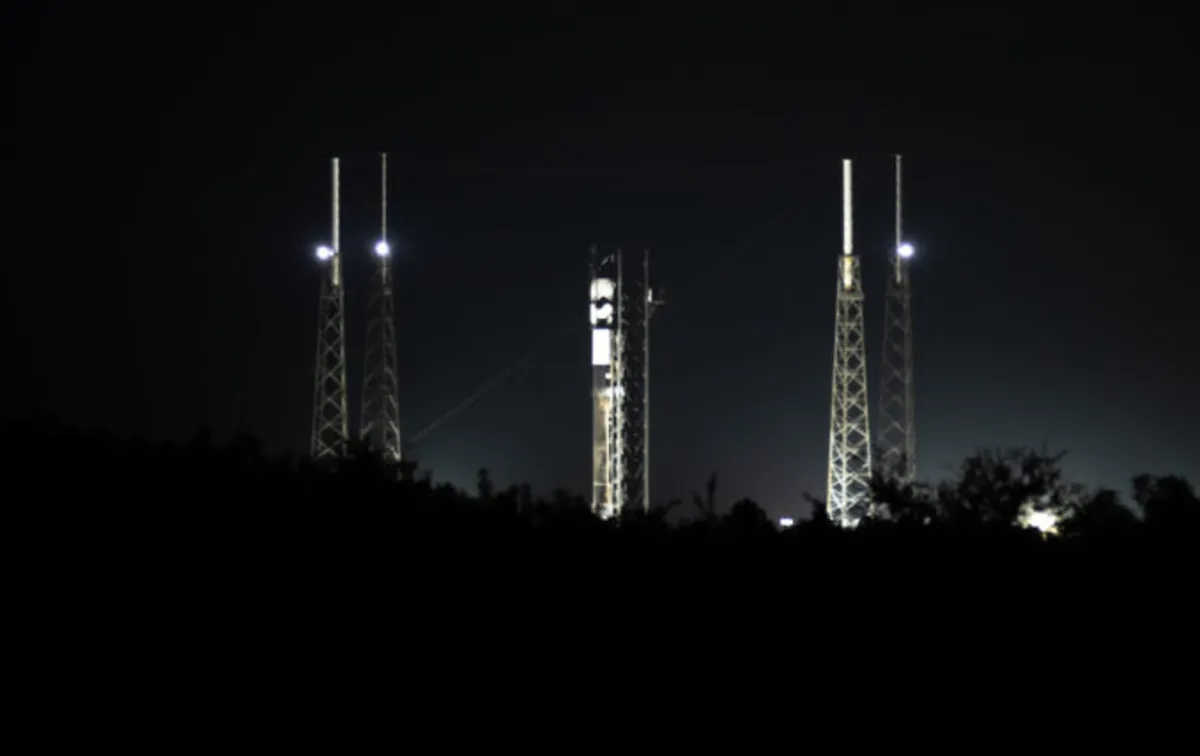
As of October 15, 2023, at 3:07 p.m. EDT (1907 UTC), SpaceX has announced a rescheduling of the T-0 liftoff time. The aerospace company is gearing up for an overnight launch from the Cape Canaveral Space Force Station aimed at enhancing its Starlink satellite constellation in low Earth orbit. This upcoming flight, set for Thursday morning, is expected to deploy an additional 28 V2 Mini satellites, which will contribute to the existing network of approximately 8,600 satellites currently in orbit. This information has been verified by renowned astronomer and expert orbital tracker, Jonathan McDowell.
In 2025 alone, SpaceX has conducted over 125 Falcon 9 launches, with an impressive 91 of those missions specifically supporting the expansion of the Starlink constellation. The planned launch for the Starlink 10-52 mission is set to occur from Space Launch Complex 40 at 5:27 a.m. EDT (0927 UTC). Provided that weather conditions do not interfere once again with the ongoing mission for the Space Development Agency (SDA) in California, this will mark SpaceX’s 130th Falcon 9 launch of the year.
Spaceflight Now will provide live coverage of the launch, starting approximately one hour before liftoff. The 45th Weather Squadron has offered a highly favorable forecast for the launch window during the early hours of Thursday, predicting a remarkable 95 percent chance of good weather. Meteorologists have indicated that the only potential issue may come from low cumulus clouds, which are unlikely to pose a significant threat to the launch.
However, the weather conditions in the designated landing zone for the Falcon 9 first stage booster, identified as tail number B1095, are rated as a “moderate” risk according to a scale that ranges from low to high. This forecast mirrors the outlook provided during the launch of the Kuiper Falcon 03 mission, which successfully achieved both launch and landing objectives. Notably, this launch will be the third mission for booster B1095, which previously facilitated two Starlink missions earlier this year.
To recover the booster, SpaceX will utilize its drone ship, ‘Just Read the Instructions’, which is expected to capture the booster approximately 8.5 minutes post-liftoff. If all goes according to plan, this recovery will represent the 138th successful landing on this particular vessel, contributing to a total of 519 booster landings accomplished by SpaceX to date. It is essential to note that this statistic is conditional upon the successful launch of the Tranche 1 Transport Layer C mission for the SDA, scheduled for Wednesday evening.